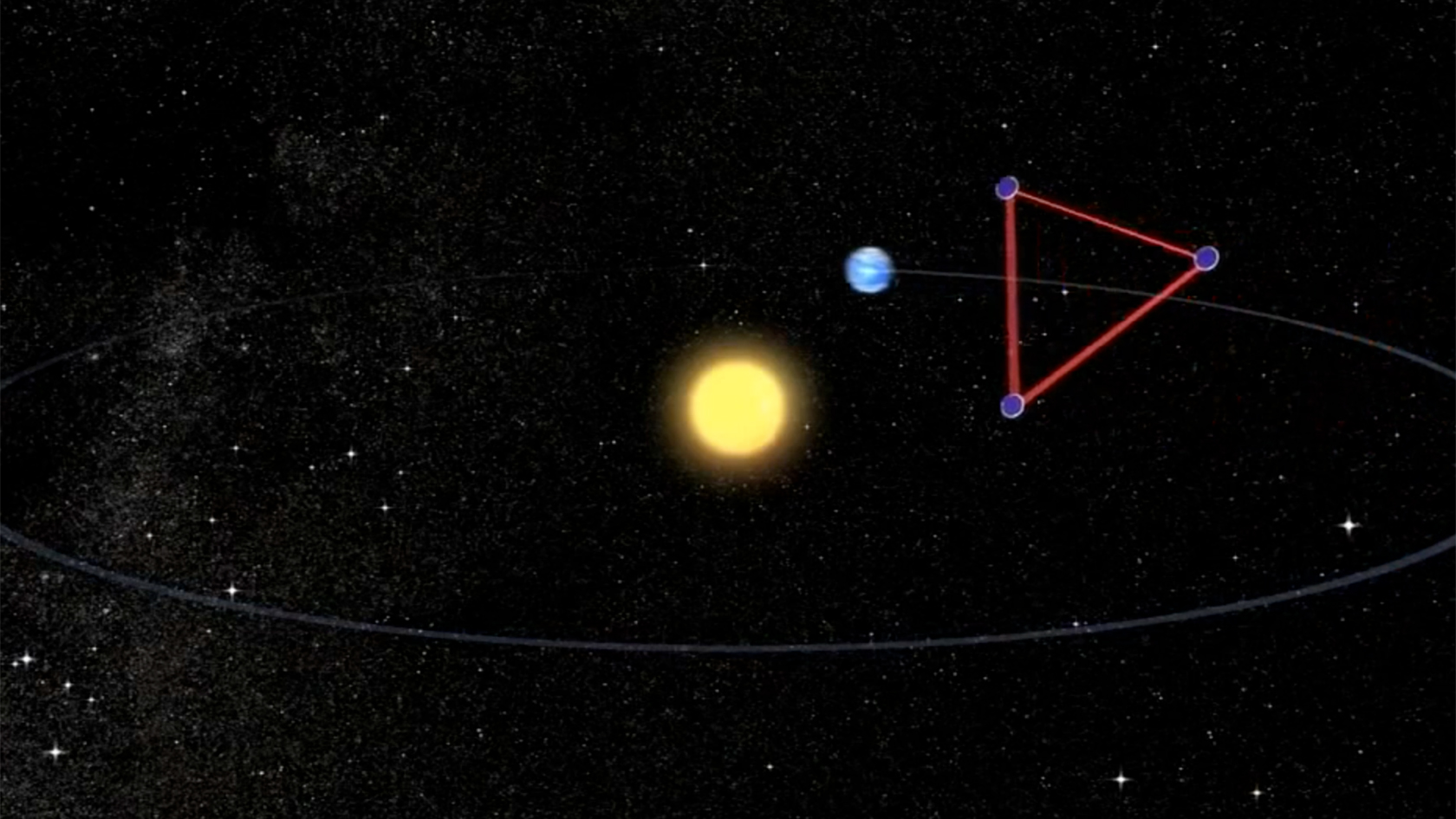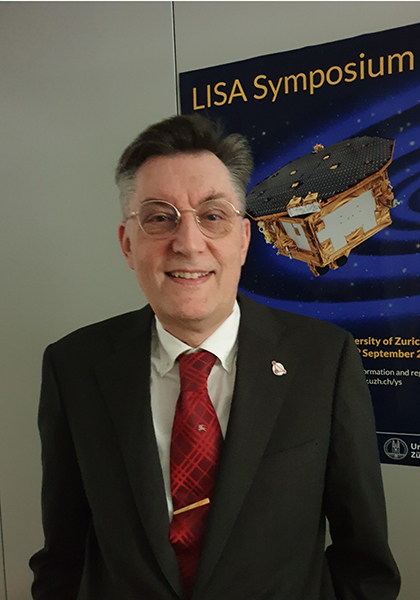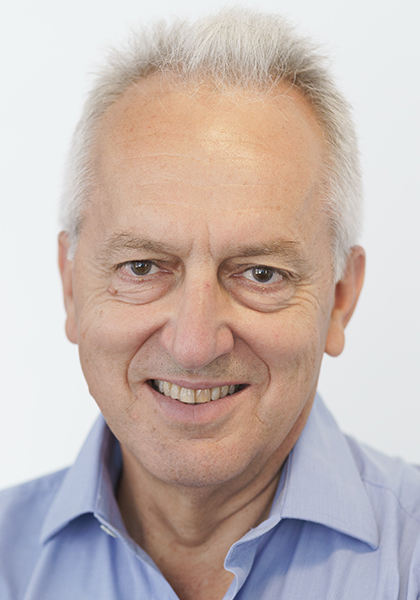Navigation auf uzh.ch
Navigation auf uzh.ch

The LISA (Laser Interferometer Space Antenna) mission to investigate gravitational waves in space has successfully completed the preliminary studies and testing phase. During this phase, the entire concept - from the technical specifications of the scientific instruments and operating system to the devices that will need to be built for use in space - was carefully scrutinized by experts as part of the Mission Adoption Review. On 25 January, following the review, the Science Programme Committee of the ESA (European Space Agency) officially confirmed that the technology is mature enough to continue developing the mission as planned. In other words, the mission got the “green light” to go ahead. The space antenna, which will be used to observe gravitational waves in space and thus detect collisions of supermassive black holes, for example, will be launched around 2035.
More than 120 research institutions across Europe and the United States are involved in the LISA mission, including the University of Zurich and the ETH Zurich. Philippe Jetzer, professor of gravitation and astrophysics at the University of Zurich, and Domenico Giardini, professor of seismology and geodynamics at ETH Zurich, have been closely cooperating on the project for more than two decades. In this interview, the professors outline the expectations for the mission and explain the involvement of the two Swiss universities in Zurich.
The LISA mission has now received the definitive green light. What does this mean for space research?
Philippe Jetzer: This milestone is the result of several decades of work to achieve the level of technological maturity necessary to build this gigantic space antenna. LISA will provide a new view of the universe. We hope to gain new information about the origins and development of the universe, such as how the Big Bang happened, and so on. And perhaps we will find out whether Einstein’s theory of relativity is valid in all areas or whether there are deviations in certain cases, thus giving us new insights into the fundamental laws of physics.
Domenico Giardini: A lot! We must remember that 95 percent of our universe is still regarded as dark energy or dark matter because it emits no electromagnetic waves, remaining invisible to all our telescopes. Gravitational waves will allow us to investigate this invisible universe. All that Ligo-Virgo observed was the final collapse of stellar black holes with a duration of less than one second. This was due to major background seismic noise on Earth and the fact that instruments with maximum arm lengths of four kilometres can only measure higher frequencies. LISA will overcome these limitations: there is no seismic noise in space, and LISA can register much lower frequencies thanks to an arm length of 2.5 million kilometres. This will make the detection of the collapse of supermassive black holes possible as well as countless close galactic binary star systems – not to mention a vast number of dynamic objects and phenomena that will help us understand how the universe was formed and how it continues to evolve.

Our models of graviational waves will be needed in order to analyze the LISA data with precision. Our calculations are therefore very important in terms of planning the mission.
What is UZH’s role in this mission?
Philippe Jetzer: In my working group, we have concentrated on investigating the possible sources of gravitational waves that might be observed by LISA. In our preparatory research, we have used Einstein’s general theory of relativity to calculate various forms of gravitational waves that we could expect to see. These models will be needed later in order to analyze the LISA data with precision. Our calculations are therefore very important in terms of planning the mission and will also be of great use afterwards. I’ve been a member of the ESA’s LISA Science Working Team and of the LISA consortium board for many years.
Domenico Giardini: ETH Zurich plays a central role in LISA. Working together with Swiss industry and with the support of the Swiss Space Office, we are supplying the front-end electronics for the gravitational reference sensor, the heart of the LISA measurement system. This sensor enables the spacecraft to follow the reference mass. We are also participating in ESA’s Performance and Operation Team, building the Swiss node of the Distributed Data Processing Centre. Together with other European and American nodes, this node processes all the data sent by LISA, builds global models of our universe and identifies the catalogue of gravitational wave sources. I am a member of the LISA Executive Committee and the LISA Consortium Board.
What’s next on the agenda for your research team now that you’ve had this green light?
Philippe Jetzer: First I’ll have to finish my contribution to the Red Book – a detailed summary of the scientific goals and technical aspects of the LISA mission – and then we will start work on calculating more and more precise models of gravitational waves and other possible observations. These are extremely complex calculations, and there’s always room for improvement. These studies will take us a few more years, certainly until the satellites are launched, and our work will continue to be needed afterwards when analyzing the data.
Domenico Giardini: In addition to activities related to the delivery of the electronics and the construction of the Swiss data centre, our research will focus on developing better global models and pipelines for data analysis and the identification of gravitational wave sources. This will enable us to create a digital twin of our universe in close collaboration with the University of Zurich and other ESA and NASA nodes.
The antenna won’t be launched into space until 2035. What hurdles need to be overcome by then?
Philippe Jetzer: One challenge will be to finish building the antennae on time. We will have to build three identical satellites capable of sending their signals to each other with pinpoint accuracy over huge distances in a triangle formation. As the number of professionals in the industry and academia with the necessary expertise is limited, the process will require very careful planning. Technically speaking, as far as I can see, there shouldn’t be any insurmountable difficulties. The preparations and analyses completed so far are extremely precise, and we also have the experience of the very successful LISA Pathfinder test satellite, in which UZH was also involved.
How does it feel to be part of such a prestigious and lengthy project – even if you probably won’t be playing an active role by the time of actual lift-off?
Domenico Giardini: LISA will run for more than 50 years, and three generations of scientists will be working to make the mission a success. We are obviously delighted to have the privilege of playing a central role in this mission. In 2015 we witnessed the fantastic launch of LISA Pathfinder live.
Philippe Jetzer: It’s a privilege to be involved in this mission and to be able to participate in important committees. And I was there in person when the LISA Pathfinder launched in 2015, which was great! It’s true, I’ll no longer be actively involved by the time the LISA satellite is launched in 2035, but hopefully I’ll still be able to assist with the data analysis. Several of my former and current PhD students and postdocs are involved in the LISA preparations and are very active in the field of gravitational wave research. And quite a few other UZH colleagues are already involved or are interested in joining the project later. There’s also a lot of involvement from people at other Swiss universities and at ETH Zurich.

This will make the detection of the collapse of supermassive black holes possible as well as countless close galactic binary star systems.